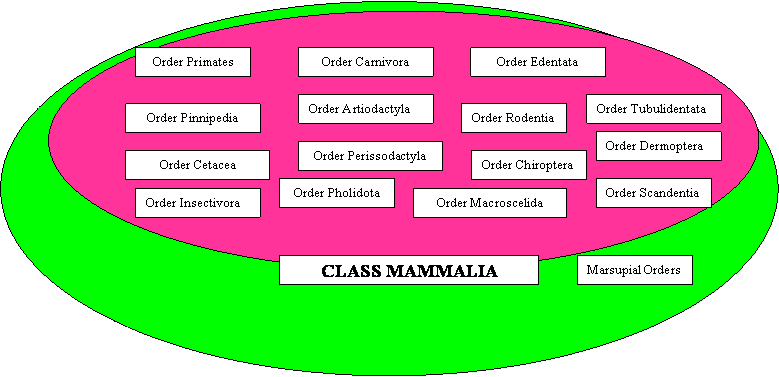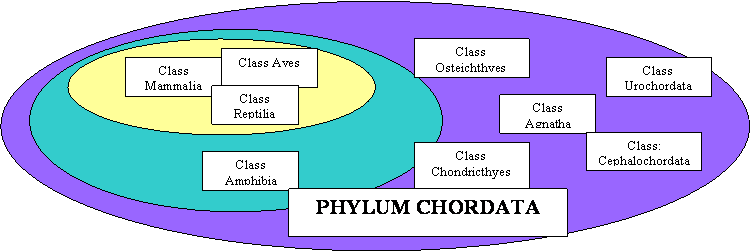Cladistics
Carolus Linnaeus devised a system of classification for living things. In this system, similar species are grouped in the same genus; similar genera are grouped in the same family, similar families are grouped together in the same order, similar orders are grouped together in the same class; similar classes are grouped into phyla; similar phyla are grouped into one of six kingdoms.
1. Related species are classified in the same genus.

2. Related genera are classified in the same family.
3. Related families are classified in the same order.
We can further subdivide an order into suborders, infraorders and superfamilies. Humans belong to the Superfamily Hominoidea with all the apes; apes and Old World monkeys belong to the Infraorder Catarrhini; apes, Old World monkeys, and New World monkeys belong to the suborder Anthropoidea.

- Related orders are classified in the same class.

We can further divide a class into subclasses, infraclasses, and superorders. Humans belong to the infraclass Eutheria (with all placental mammals) and the subclass Theria (placental and marsupial mammals).
- Related classes are classified in the same Phylum.

We could divide Phylum chordata into Subphyla, superorders, and other groups as well. Mammals are classified as amniotes along with reptiles and birds, all amniotes are classified as tetrapods along with amphibians, all tetrapods are classified as gnathostomes along with Osteichthyes and Chondrichthyes, all gnathostomes and some agnathans are classified as Vertebrates (subphylum), and all vertebrates and hagfish are classified as craniates.
CLADISTIC TERMINOLOGY
If evolution occurred, we can draw a relationship based on cladistic phylogeny which depicts relationships between organisms in a testable cladogram. Only similarities are represented without reference to time. Monophyletic groups arise from a common ancestor and there should be evolutionary novelties that all members of the group share. Such a group is a clade or a natural group. In the second cladogram above, dinosaurs form a clade or monophyletic group. Polyphyletic groups are groups which do not have a common ancestor included in the group. In the first cladogram, the two major groups of dinosaurs evolved separately from different groups of thecodonts (which are not dinosaurs) and dinosaurs would be a polyphyletic grouping.
Paraphyletic groups are lineages that do not include all descendants of a common ancestor. In both of the dinosaur cladograms, “thecodonts” are a paraphyletic group because not all of the descendants of the first thecodonts are considered thecodonts (some are called dinosaurs). Are humans apes? Are we amphibians? Are we fish? If your answer is “no”, then “apes”, “amphibans”, and “fish” are paraphyletic groups since the group “fish” does not include modified descendants of fish (us) and the group “apes” does not include modified descendants of apes (us) (Fastovsky, 1996; Lucas, 2004).
